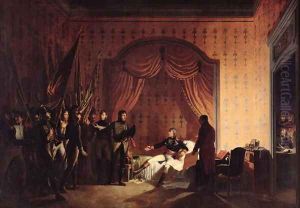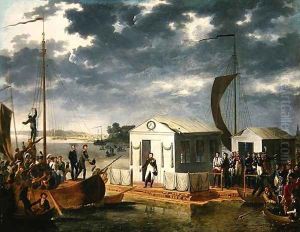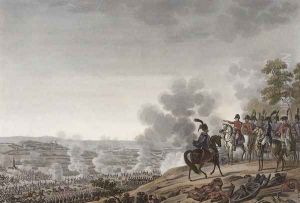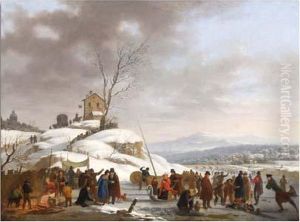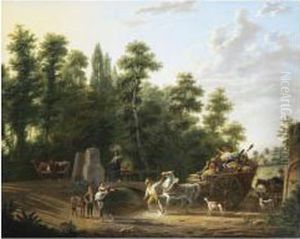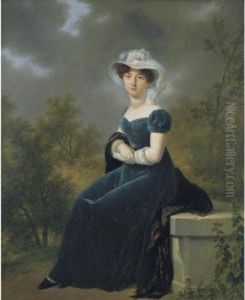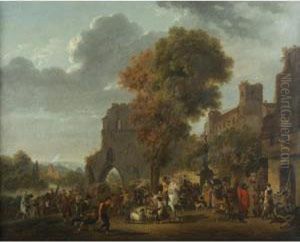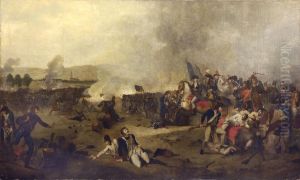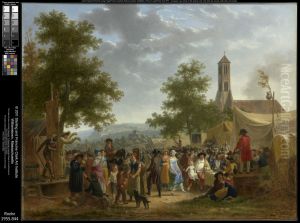Adolphe Roehn Paintings
Adolphe Roehn, also known as Adolphe Jean-Baptiste Bayot, was a French painter and lithographer born on April 11, 1780, in Paris. He was primarily known for his historical and genre scenes, often focusing on the Napoleonic era and its battles, which made him a notable figure among the artists portraying the grandeur and strife of early 19th-century France.
Roehn received his artistic training under the tutelage of Jacques-Louis David, the preeminent French painter of the Neoclassical style, who had a significant influence on European art. Under David's guidance, Roehn developed a keen eye for detail and composition, which would later become hallmarks of his own work.
During his career, Roehn exhibited at the Paris Salon, the official art exhibition of the Académie des Beaux-Arts in Paris. His works were well-received, and he gained a reputation for his meticulous depictions of historical events, particularly those involving Napoleon Bonaparte. Roehn's interest in the emperor was not just artistic; it was also personal, as he served in the Imperial Guard during the Napoleonic Wars. This firsthand experience lent authenticity to his battle scenes and military subjects.
Aside from his historical paintings, Roehn also produced genre scenes that captured the essence of Parisian life during his time. His works often included finely detailed characters engaged in everyday activities, showcasing the fashion and customs of the era.
In the realm of printmaking, Roehn was involved in lithography, a relatively new medium at the time, which allowed for the wide distribution of his works. His lithographs helped popularize his paintings and made his images accessible to a broader audience.
Adolphe Roehn's contribution to French art was recognized in his lifetime, and his works continue to be studied and appreciated for their historical value and artistic merit. He passed away on May 11, 1867, in Paris, leaving behind a body of work that offers a window into the turbulent and dynamic period of the early 19th century.
